The Reading Chair
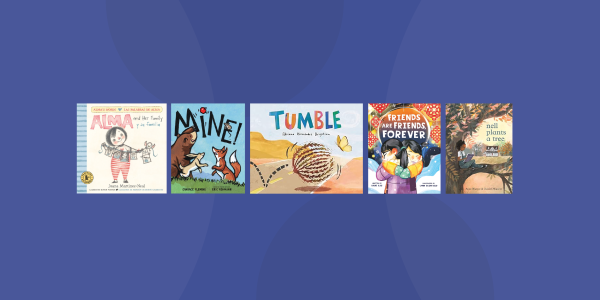
You are here
A good story uses the power of anticipation to keep readers engaged and wondering—delighting in discovering what comes next. Maybe it’s the overall arc of the story that feels well-executed. Or perhaps the author makes good use of the anticipatory power of page turns—where a surprise is around the corner every few lines. A book doesn’t need to be constantly dramatic to fill the reader with anticipation. Well-paced writing makes a book feel purposeful and satisfying, helping to spur young children’s engagement and learning.
This edition of The Reading Chair features books that are well-crafted and beautifully paced, inviting both children and adults to wonder what comes next. In Alma and Her Family, the story bounces from spread to spread, just right for a board book. Tumble uses succinct, well-paced language to keep readers invested in the lifecycle of the tumbleweed. In Mine!, the pacing is a giveaway that the stakes are high. The characters in Friends Are Friends, Forever experience a range of emotions, and the pacing helps readers stay engaged and eager to learn how the story develops. The tight pacing of Nell Plants a Tree helps readers jump back and forth in time without getting confused. We hope that you enjoy the language of these books as much as we did—and that they help you spot other books whose language and pacing will bring joyful participation and learning to your setting.
—Isabel Baker and Miriam Baker Schiffer
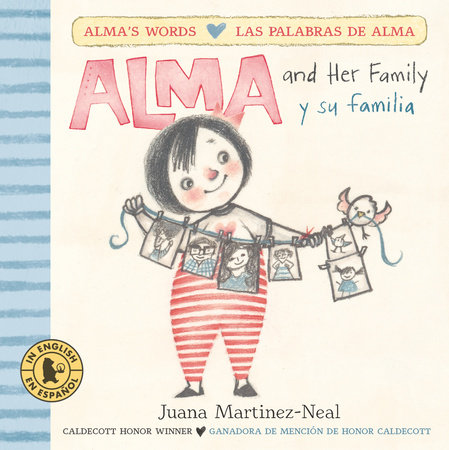 Alma and Her Family/Alma y su familia
Alma and Her Family/Alma y su familia
By Juana Martinez-Neal. 2023.
Somerville, MA: Candlewick. 24 pp. Ages birth to 3.
Alma, who debuted in Alma and How She Got Her Name in 2018, is back—this time in a board book. In the previous book, the adorable little girl came to love her long name once she learned about all the people she was named for. In this new bilingual board book for younger readers (part of the Alma’s Words series), Alma shares how she connects with each member of her family. She kisses her daddy, squeezes her mommy, and copies her brother. She also interacts with her extended family, knitting with her great aunt and playing with her cousins—and sings to her bird.
Each spread features text in both Spanish and English. Martinez-Neal’s illustrations are playful and bright, and there’s plenty of negative (or blank) space so that the pages aren’t too crowded for the small format. Alma is irresistible, and early childhood educators can scaffold infants and toddlers in making connections between Alma’s world and their own.
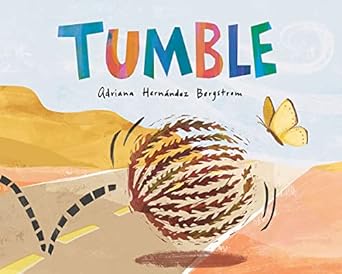 Tumble
Tumble
By Adriana Hernández Bergstrom. 2023.
New York: Orchard Books. 32 pp. Ages 2 to 7.
With lyrical text and a topic that is deceptively simple and accessible to young children, this book draws readers right in. It uses sparse language to teach big science ideas. Children will love learning about the tumbleweed’s life cycle and its unconventional method of seed dispersal. While many picture books describe plants that stay rooted in place and rely on wind, water, and animals to spread their seeds, this book shows how the tumbleweed does the job itself, rolling through the landscape and dropping seeds as it goes. Bold, playful illustrations add to the energy.
This book is a great resource for learning about desert life. The backmatter encourages children to use their detective skills to find the desert flora and fauna pictured throughout the book and offers more information about the tumbleweed. This excellent title can be used to extend a unit on seed study, showing how some plants spread seeds in unexpected ways. A gem of a book!
 Mine!
Mine!
By Candace Fleming. Illus. by Eric Rohmann. 2023.
New York: Anne Schwartz Books. 40 pp. Ages 2 to 6.
From experienced husband and wife collaborators Fleming (author) and Rohmann (illustrator) comes a fresh story that has all the winning qualities of a good tale. Several cute animal characters fall prey to their own selfishness and egos, each determined to take a tree’s one solitary apple even if it means a fight. It’s an impulse that children (and adults) can identify with. In the end, the two smallest characters, who are happy to share with each other, get the apple. Young readers often love a story of redemption, especially when it benefits the underdog. Fleming is masterful at pacing, with no wasted words and plenty of drama. Rohmann’s illustrations are full of punch and expression. This is an excellent title to support children’s social and emotional development through discussions about feelings, getting along, and problem solving.
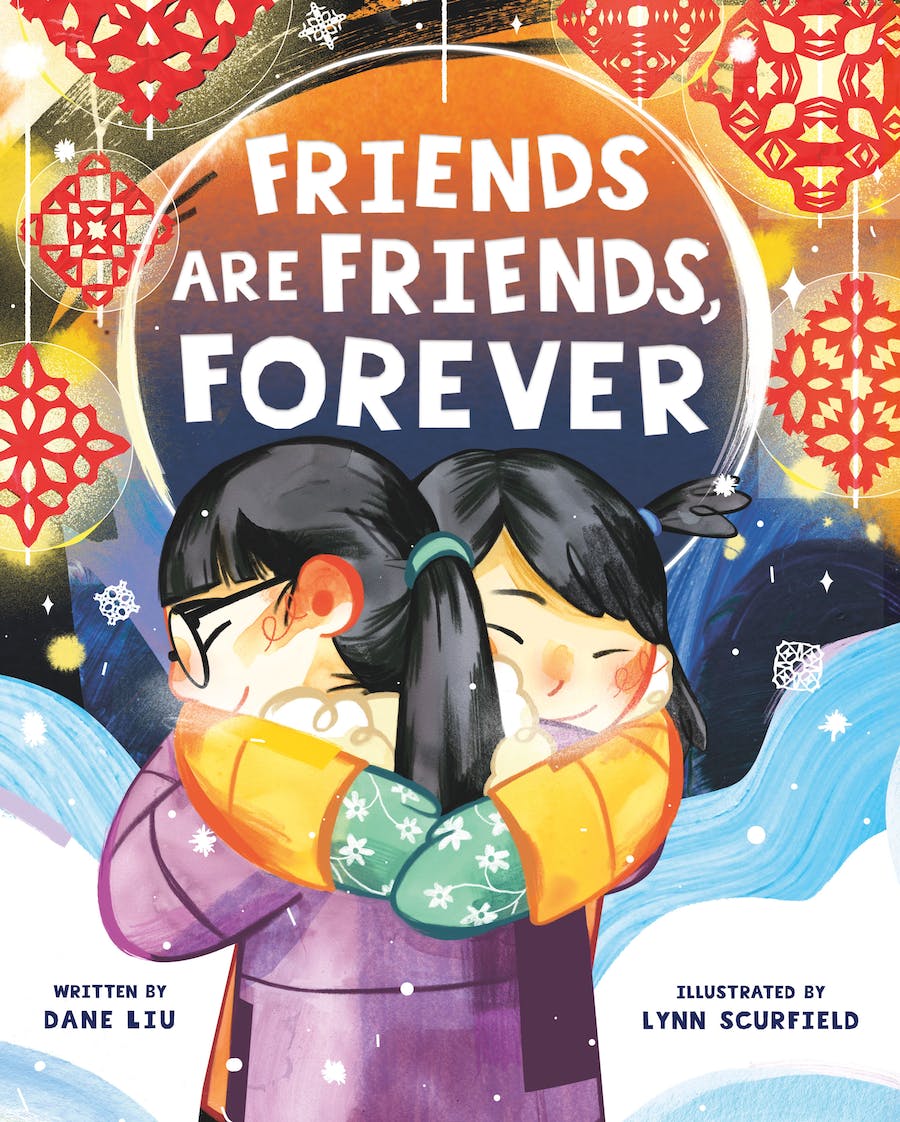 Friends Are Friends, Forever
Friends Are Friends, Forever
By Dane Liu. Illus. by Lynn Scurfield. 2022.
New York: Godwin Books. 40 pp. Ages 4 to 8.
Before Dandan and her parents move to America, they spend one last Lunar New Year’s Eve in China celebrating with family and friends. Dandan and her best friend, Yueyue, make red cut-paper ornaments together to hang on the trees, as they always do. Yueyue gives Dandan a stack of red paper and a spool of string so that Dandan can continue their tradition with a new American friend. Yueyue also reassures her that they’ll be friends forever. It’s hard for Dandan to adjust to life in the United States, but Yueyue’s wisdom and the kindness of a new classmate help Dandan find her way.
This beautiful story is emotionally resonant. It offers a lovely look at Lunar New Year traditions. It captures the challenges of moving to a new country and adapting to a new culture. The book can also inspire several extension activities, including learning about children’s social and cultural traditions in an ongoing, integrated way within the curriculum. Backmatter includes a note about Lunar New Year traditions and how they vary by region, the author’s own journey and friendships that inspired the book, as well as instructions for how to make paper snowflakes. The story can also be used as a helpful starting point for talking with children about the challenges of making new friends: kindness and connection are front and center.
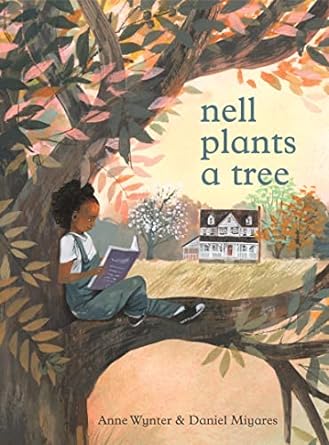 Nell Plants a Tree
Nell Plants a Tree
By Anne Wynter. Illus. by Daniel Miyares. 2023.
New York: Balzer + Bray. 40 pp. Ages 3 to 7.
For this family, visiting grandma’s house is full of good times, especially playing in and around the large tree outside. The children get scrapes but climb higher. They find a bird’s nest. And they do it together. Then they run to the porch for a glass of their grandma’s lemonade. Intertwined with this story is another one, of a little girl who plants a seed and cares for it as it grows into a tree. Readers discover that the little girl becomes the grandma, a woman who doesn’t just care for her grandchildren in the present but has been preparing for them since she planted that tree. This is an ode to those who plant, to grandparents who make quiet magic happen for their grandchildren, and to the wonderful role familiar trees play in a child’s life.
Both younger and older children will enjoy the light, poetic text. Miyares’ realistic, expressive illustrations show the characters interacting with and enjoying each other throughout. Illustrations fill the page, including both the massive tree and the much smaller people, and the reader’s eye always knows where to go.
Copyright © 2024 by the National Association for the Education of Young Children. See Permissions and Reprints online at NAEYC.org/resources/permissions.
Isabel Baker, MAT, MLS, is the founding director of The Book Vine for Children, a national company dedicated to getting good books into the hands of preschool children and their teachers. Isabel has worked as a children’s librarian and is currently a presenter on early literacy and book selection.
Miriam Baker Schiffer, MFA, is a writer in Brooklyn, New York. She consults on book selections for The Book Vine, in McHenry, Illinois. Miriam’s children’s book, Stella Brings the Family, was published by Chronicle Books in 2015.